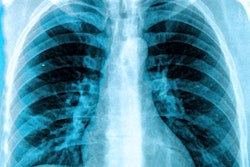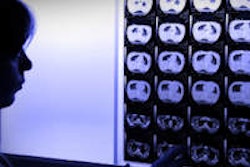
Many patients undergoing mechanical ventilation continue to receive daily chest x-rays, despite the publication of guidelines discouraging their use. On the positive side, the use of chest x-rays in these patients has declined from 2008 to 2014, according to an August 10 paper in JAMA Network Open.
Nearly three-fifths of patients on mechanical ventilation still receive chest x-rays in the U.S., according to a research team led by Dr. Hayley Gershengorn of the University of Miami. What's more, there was high variation in daily chest x-ray use across hospitals, with some facilities more than twice as likely as others to perform radiography exams every day on patients on mechanical ventilation.
The routine use of daily chest x-rays to monitor patients on mechanical ventilation has been discouraged by groups such as the American College of Radiology (ACR) and the Choosing Wisely campaign to limit unnecessary medical procedures. The ACR began advising against routine daily chest x-rays in 2008, especially for stable patients.
However, unlike in other countries, daily radiography for patients under mechanical ventilation continues to be common in the U.S., the researchers noted. To investigate their hypothesis, Gershengorn and colleagues analyzed data from 512,518 patients who received mechanical ventilation at 416 hospitals from 2008 to 2014. In all, 63% of patients received daily chest x-rays over the study period.
There was major variation between who received the imaging exams on a daily basis, they found. At hospitals with the highest use, mechanical ventilation patients were 2.43 times more likely to get daily chest x-rays, compared with hospitals with the lowest use.
| Characteristics of mechanical ventilation patients with daily chest x-rays vs. no daily x-rays | ||
| No daily chest x-ray | Daily chest x-ray | |
| White | 62.1% | 66.7% |
| Admitted for major surgery | 26.5% | 31.0% |
| Private insurance | 16.6% | 18.7% |
| Cardiovascular diagnosis | 9.2% | 13.9% |
| Duration of mechanical ventilation | Median 4 days | Median 6 days |
Also, hospitals in the Northeast tended to use daily chest x-rays more often than those in the Midwest.
On the positive side, the use of daily chest x-rays for mechanical ventilation declined over time, from 66% of patients when the study started in 2008 to 56% at the end in 2014. Very small hospitals had the highest rate of daily chest x-ray use at the beginning of the study, but they saw the largest decline over the study period.
Why is it so hard to change physician behavior in ordering unnecessary exams? Gershengorn and colleagues noted that the profit motive is most likely not at work for this exam, as ordering physicians don't get compensated for chest x-rays. A more likely explanation is simply institutional inertia in changing physician behavior.
But it's an issue that has ripple effects. The researchers estimated that 2.3 million radiographs would be avoided at a savings of $144 million within the U.S. healthcare system if usage rates went down in hospitals with the highest three quartiles of use in the U.S.
"Altering care from an automated system where [chest x-rays] can be ordered as the default to a system where every [chest x-ray] requires a clinical decision both is time-consuming and can add to decision fatigue," they noted.



















